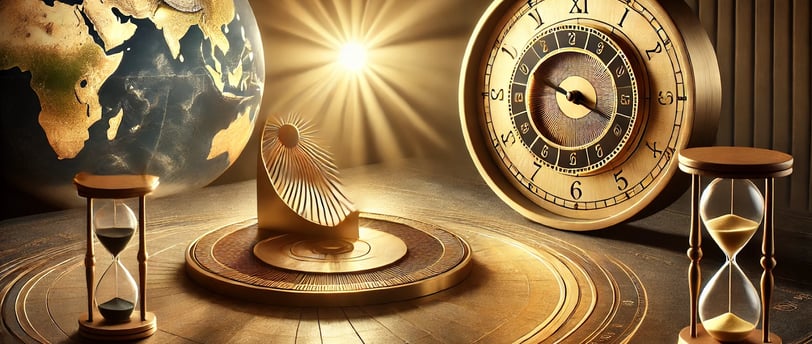Why do clocks run clockwise?
A Timeless Mystery: How Ancient Sundials Shaped the Way We See Time Today
Curious Writer
2/11/20252 min read


Have you ever paused to wonder: why do clocks run clockwise? It’s such a basic part of our lives that we rarely question it. Yet, as with many everyday things, the answer lies in a mix of history, nature, and a dash of human convention.
The sundial connection
To unravel this mystery, we must travel back to ancient times. Before digital watches and wall clocks, early civilizations used sundials to tell time. A sundial works by casting a shadow as the sun moves across the sky. In the Northern Hemisphere, where many early civilizations (like the Egyptians and Greeks) flourished, the shadow of a sundial moves in a pattern we now call “clockwise.” Why? Because the sun rises in the east, arcs southward, and sets in the west.
When mechanical clocks were invented in the Middle Ages, they mirrored this natural motion. It was a practical choice—people were already accustomed to thinking of time’s progression in this direction.
What about the Southern Hemisphere?
In the Southern Hemisphere, sundial shadows move in the opposite direction! So, if early timekeeping had been dominated by cultures south of the equator, our clocks might have spun counterclockwise instead. Imagine how different our sense of time might feel if that were the case!
Mechanical clocks emerged around the 14th century in Europe, and their design wasn’t just about copying nature. Early clockmakers had to figure out how to arrange gears and hands efficiently. Following the “sundial logic” was a simple and intuitive solution—no need to reinvent the wheel (or the gear, in this case).
Why not change it?
Could we decide to reverse the direction of clocks today? Technically, yes. But conventions like this are sticky. Imagine trying to change how traffic flows on roads or which side of the street pedestrians walk on. Once a system becomes deeply ingrained, it’s hard to undo—even if it’s arbitrary.
The bigger picture
The story of clockwise motion reminds us of how human culture evolves alongside nature. It’s a blend of practicality, geography, and historical accident. And who knows? If sundials had never existed, we might measure time in a completely different way today.
So, next time you glance at a clock, take a second to appreciate this little nod to ancient ingenuity. And if you’re in the Southern Hemisphere, give a wink to what might have been.
What do you think? Could you ever get used to a counterclockwise world?
Explore
Discover insights that spark your curiosity today.
Inspire
Engage
© 2024. All rights reserved.
